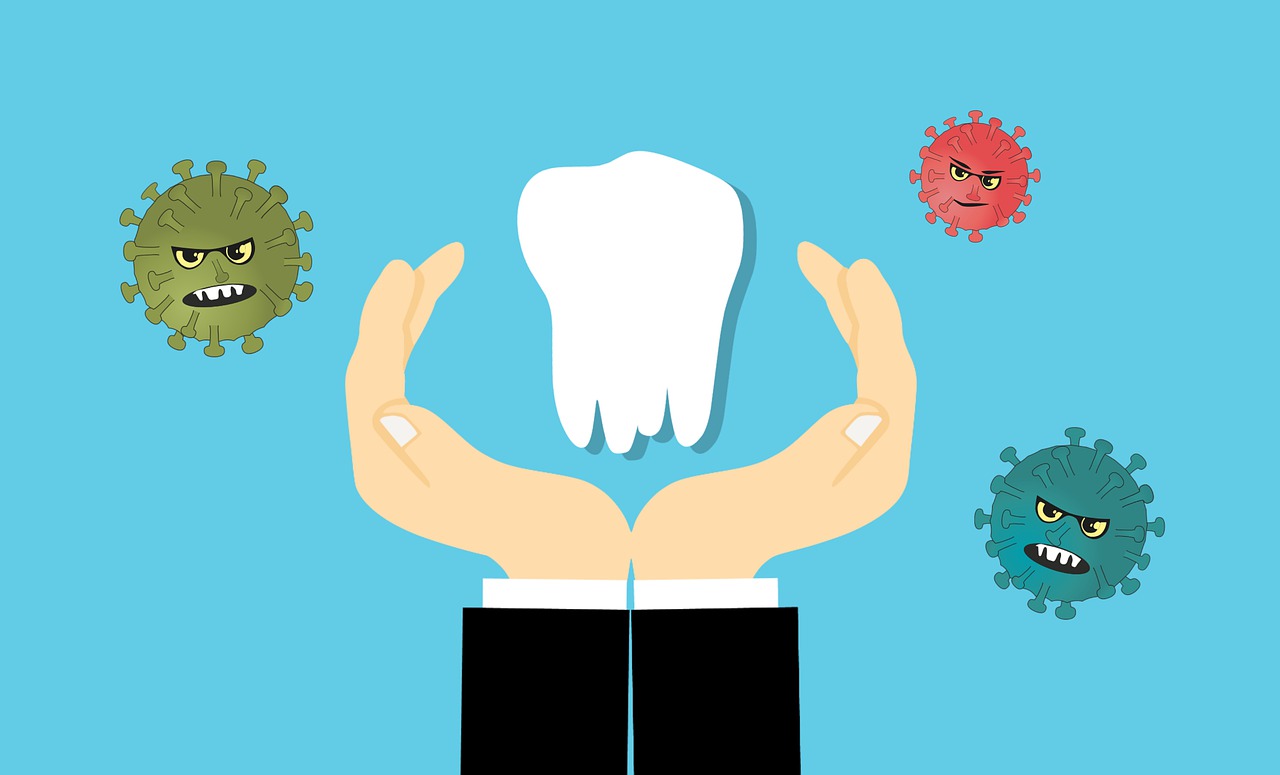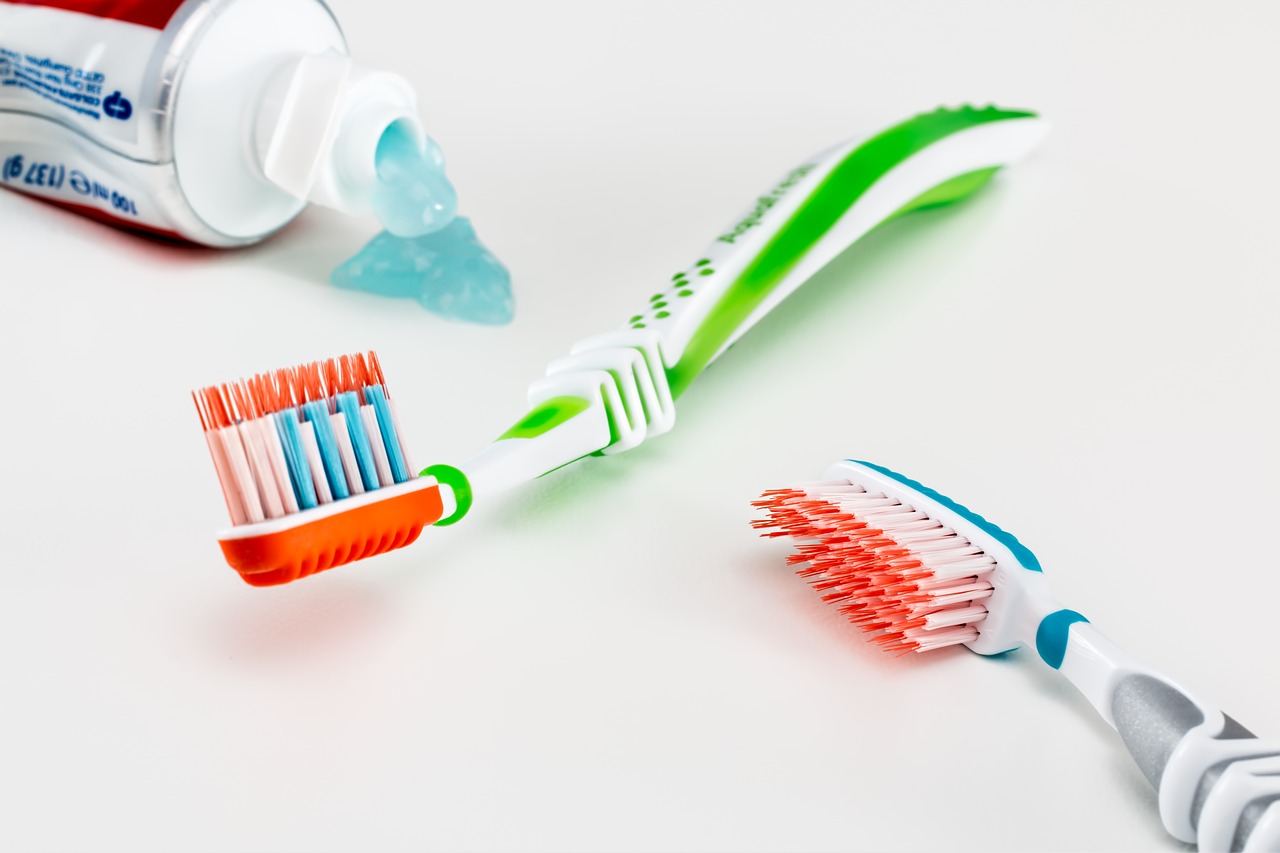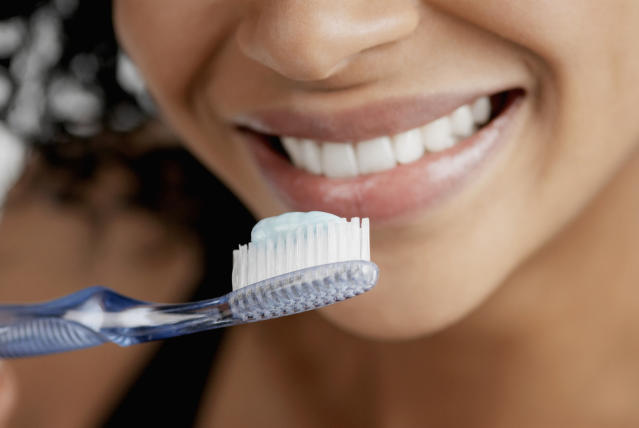The concept of oral hygiene is related to the care of teeth and mucous membranes exposed to the formation of plaque, which is one of the main pathogenic factors of the oral cavity. How to maintain oral hygiene?

Dental Plaque
It has the form of a thin film which is a layer formed on the teeth as a result of the colonization of bacteria living in the mouth. Regular plaque removal helps maintain a healthy oral cavity. Failure to regularly clean and care for the teeth may lead to the formation of caries and, consequently, loss of dentition and irreversible changes in the temporomandibular joint. Plaque can be removed with a jet of clean water or by using more effective methods such as brushing and flossing your teeth.
Tooth Brushing for Oral Hygiene
For effective tooth brushing, you should use a properly selected toothbrush. There are many types of brushes on the market, but the choice should be focused on individual characteristics, such as:
- hypersensitivity to periodontal mechanical injuries ( aphthae, inflammation, bleeding gums),
- age (size and ease of maneuvering the brush),
- excessive plaque formation.
The choice may be one of the three levels of brush softness:
- soft
- medium-hard (medium)
- hard (hard)
Soft bristles are especially recommended for patients with a tendency to mechanical injuries. For patients with excessive plaque, it is better to use a hard or medium-hard toothbrush. For proper hygiene, you should brush your teeth two or three times a day, morning and evening, and when necessary.
Basic Rules For Brushing Your Teeth
The most effective method of brushing your teeth in adults, the ROLL (gingival-tooth) method is used. Brushing begins with opening the dental arches (lowering the lower jaw) and applying the brush bristles to the gums at an angle of about 45 °. The bristles should face the teeth, never the other way around the gums. Then, movements are made to “sweep” food debris from the interdental spaces by gently pressing the toothbrush.

It is recommended to perform such movements at least three times for every three teeth in a single arch. Do not brush teeth with dense arches (with clenched teeth) because then you do not brush the entire surface of the teeth. Such a repetitive set of movements should be used to clean all teeth in the mouth, both from the buccal (upper outer) side, labial (lower outer) and palatal (upper inner) and lingual (lower inner). Finally, there is also brushing the chewing surfaces, i.e. those that form a bite and chew food. They are cleaned with alternating forward and backward movements.
Brushing The Tongue
Often overlooked in oral hygiene is the tongue, which is home to many bacteria and fungi. In order to clean the tongue, you can use specially designed scrapers or a toothbrush. Toothpastes are not used for this purpose, but rinses are recommended. By rinsing the mouth, the tongue is cleansed, reducing the number of bacteria and fungi present on it.
Interdental Flossing For Oral Hygiene
Dental floss is used to thread the interdental spaces. You should start threading by stretching a comfortable piece of thread between the thumbs of both hands and gently inserting it into the interdental spaces. Then, the residual food debris is removed with the movement of the sidewalls of the adjacent teeth.

At the end of the day, daily hygiene can be supplemented with mouth rinses, which, thanks to their foaming effect, allow you to remove the remaining residues and reach hard-to-reach places. In addition, they give the breath a pleasant smell and may have an antibacterial effect in the oral cavity environment. Remember! Regardless of age, maintain oral hygiene. This is not only important for aesthetic reasons but can also protect against serious diseases of the oral cavity and the entire body.
In the quest for the perfect smile, we are always delighted to assist.

